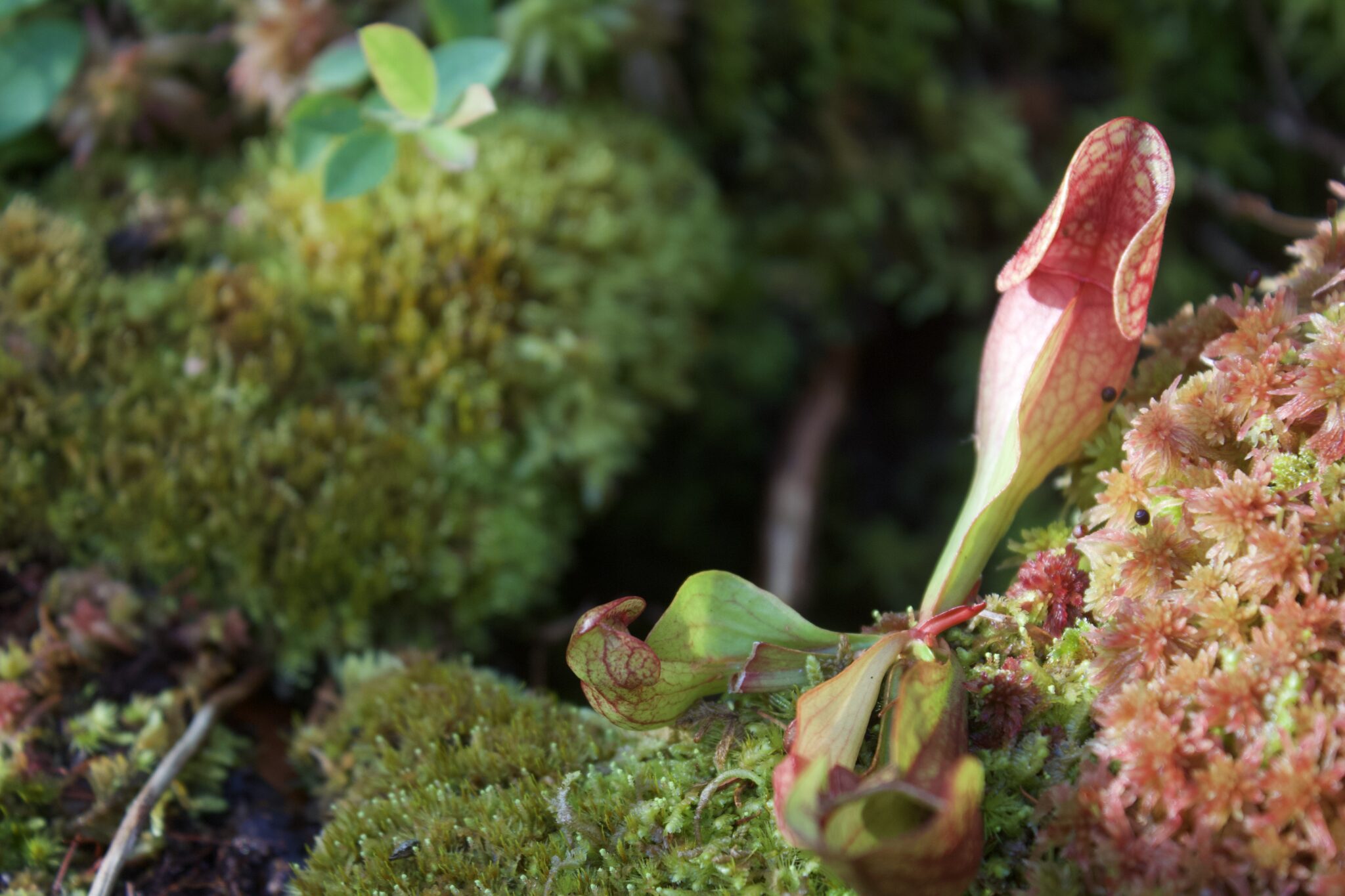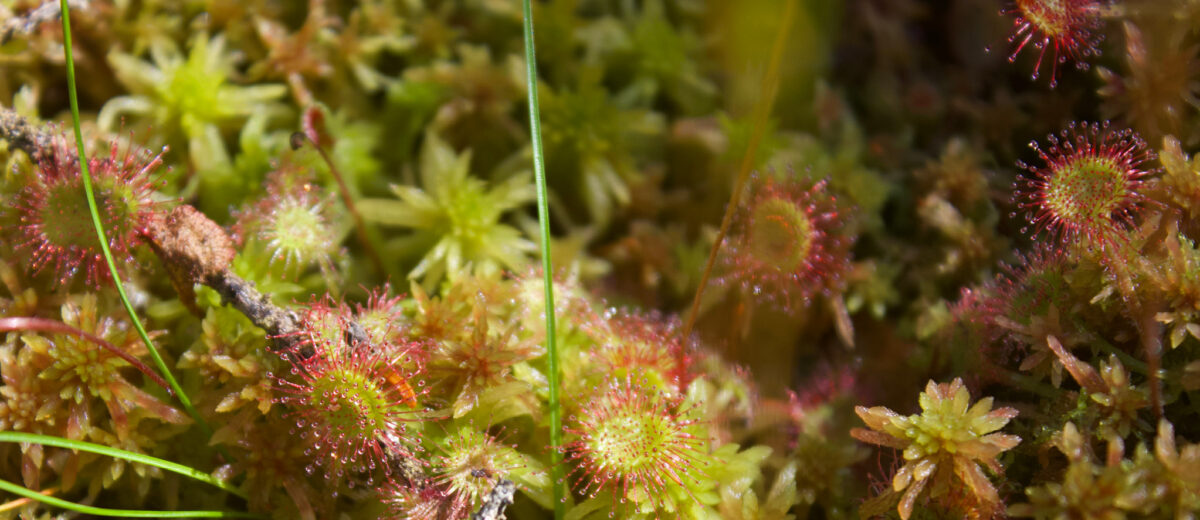story + photos by Ella Halbert
This July, I found myself squashing through a bed of sphagnum moss in Schoodic Forest, about six miles inland from where Schoodic Institute is located. I was with Brooke Goodman, the Acadia Early-Career Fellow in Science Research. We were conducting point counts to characterize the bird community in the recently protected tract of land managed by Maine Coast Heritage Trust (MCHT). Following our GPS to the coordinates of a new point count site, we trekked through the dense forest, often pushing headfirst through the tangle of branches to move forward. As we stomped, crackled, and stumbled our way to our destination, the solid, twig-covered ground began to give way to soft, squishy sphagnum moss.
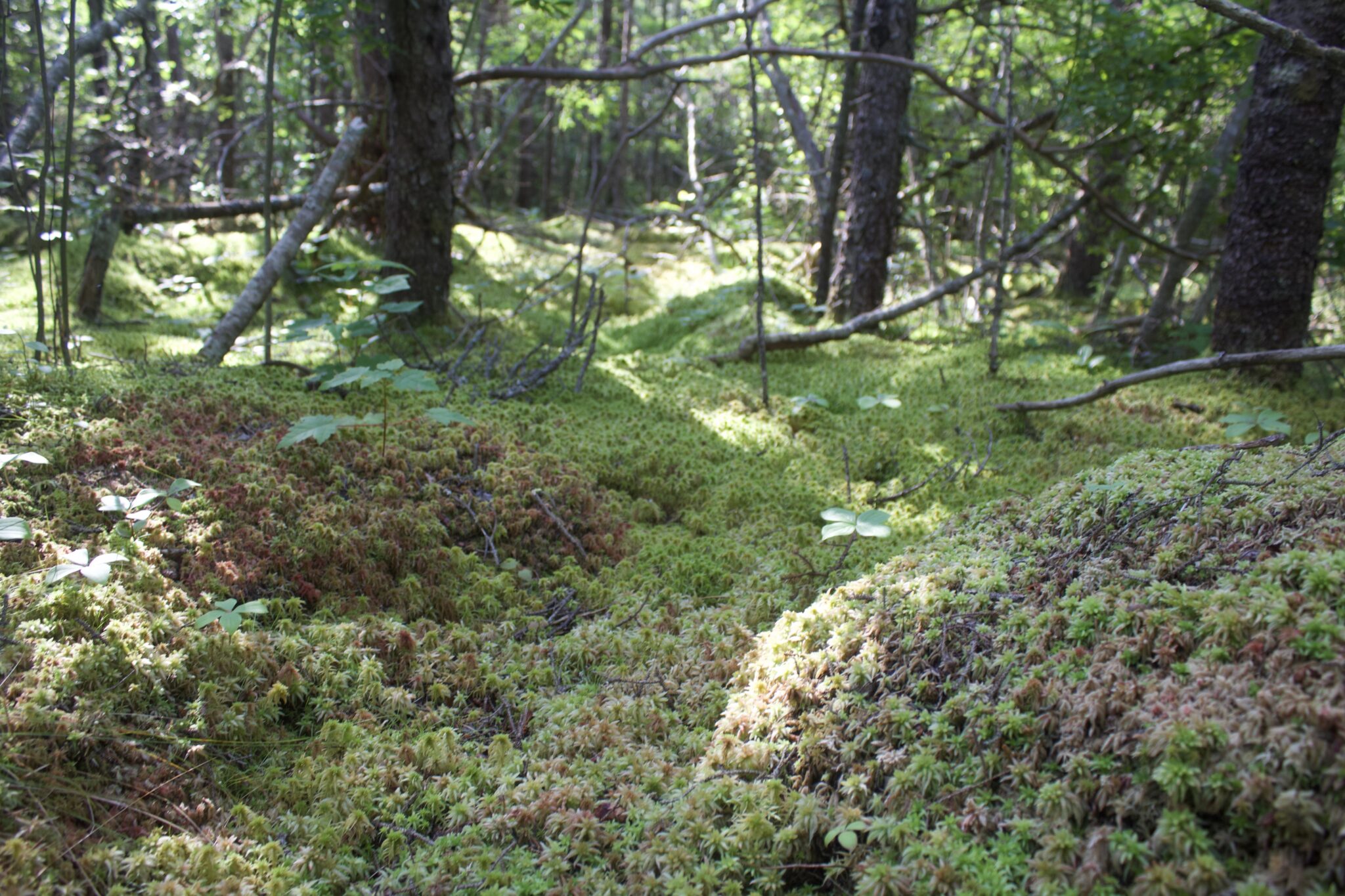
My surroundings started to change, shifting from thick, forested underbrush with lots of evergreen trees and shrubs to a more open area. The ground was blanketed in moss and speckled with sunlight filtering through the canopy. While taking in this gorgeous site, I realized I was in a wetland, with the classic types of vegetation found in bogs. The ground was carpeted in sphagnum moss, leading me to believe that I was standing in a blanket bog. I had learned about these wetlands in college courses, but never before experienced one. These bogs are acidic, nutrient-poor, and known for their thick layer of peat moss. In cool, oceanic climates, the sphagnum moss decomposes slowly, and as new layers are added, a thick and squishy mat is created that retains water and acts as a carbon sink.
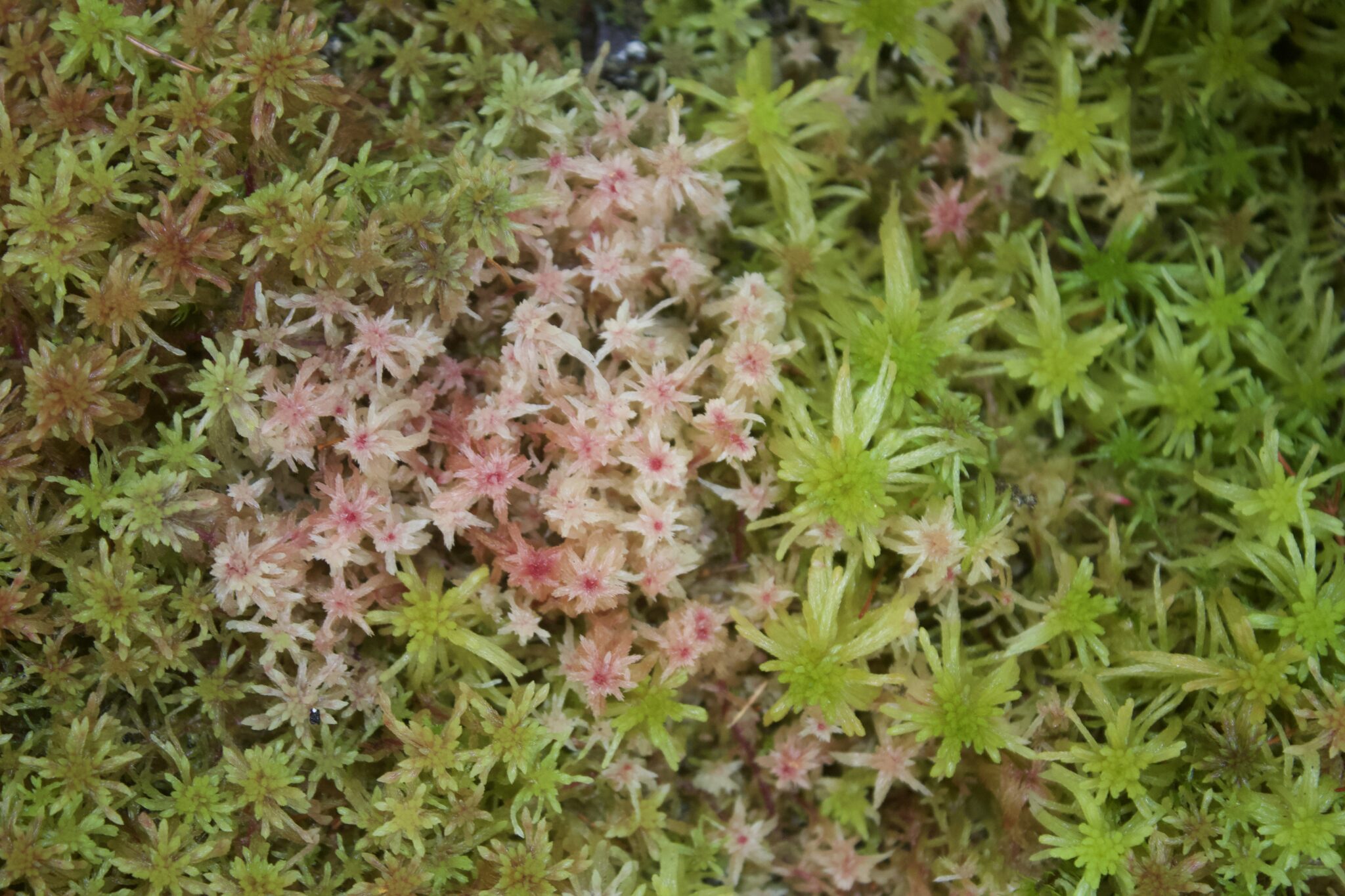
As I looked around, taking in the strange and unknown organisms around me, I noticed a tiny white flower suspended high above the level of moss on a stem so thin it was nearly invisible. I crept closer, marveling at the sequential arrangement of the five-petaled flowers. I looked down, down, down the slight stem and saw sunlight glinting off something at the base. Upon closer inspection, I noticed the light was bouncing off tiny drops of liquid coating the tips of the plant’s red, fuzzy looking leaves. Puzzled, I asked myself, “Why are these leaves covered in droplets of liquid?”
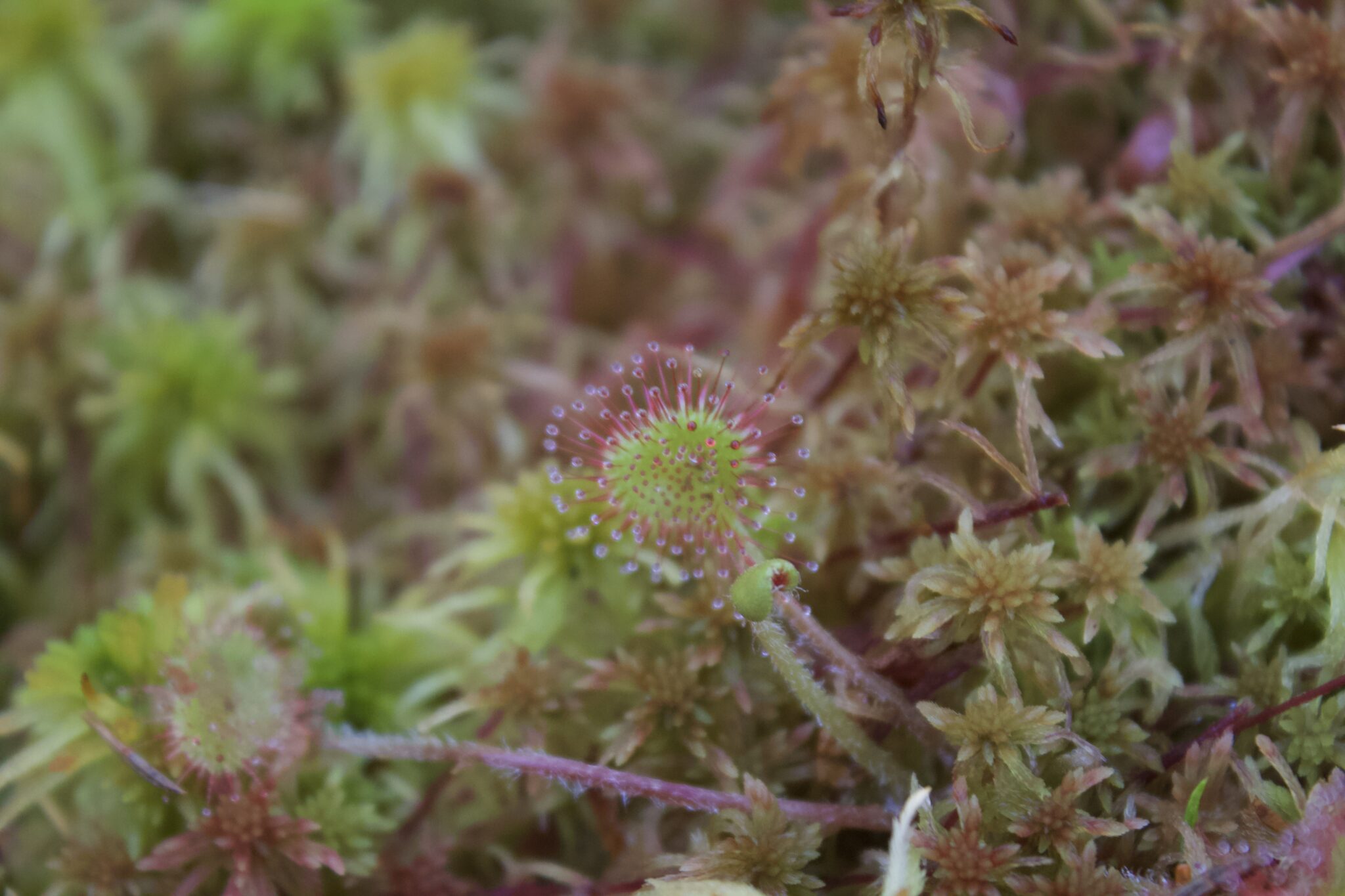
A heartbeat later, recognition snapped into place – this was sundew, a carnivorous plant found in the wetlands at Schoodic Point! I gently touched one of the leaves to confirm my suspicion, and sure enough, my finger came away coated with a sticky gel. I was transfixed – I had finally found the sundew I’d heard so much about. The small, insect-eating plant is the namesake of the most well-known trail on Schoodic Institute’s campus, but I hadn’t glimpsed any yet. I used Seek, a field identification app by iNaturalist, and quickly confirmed that I was looking at round-leaved sundew, Drosera rotundifolia.
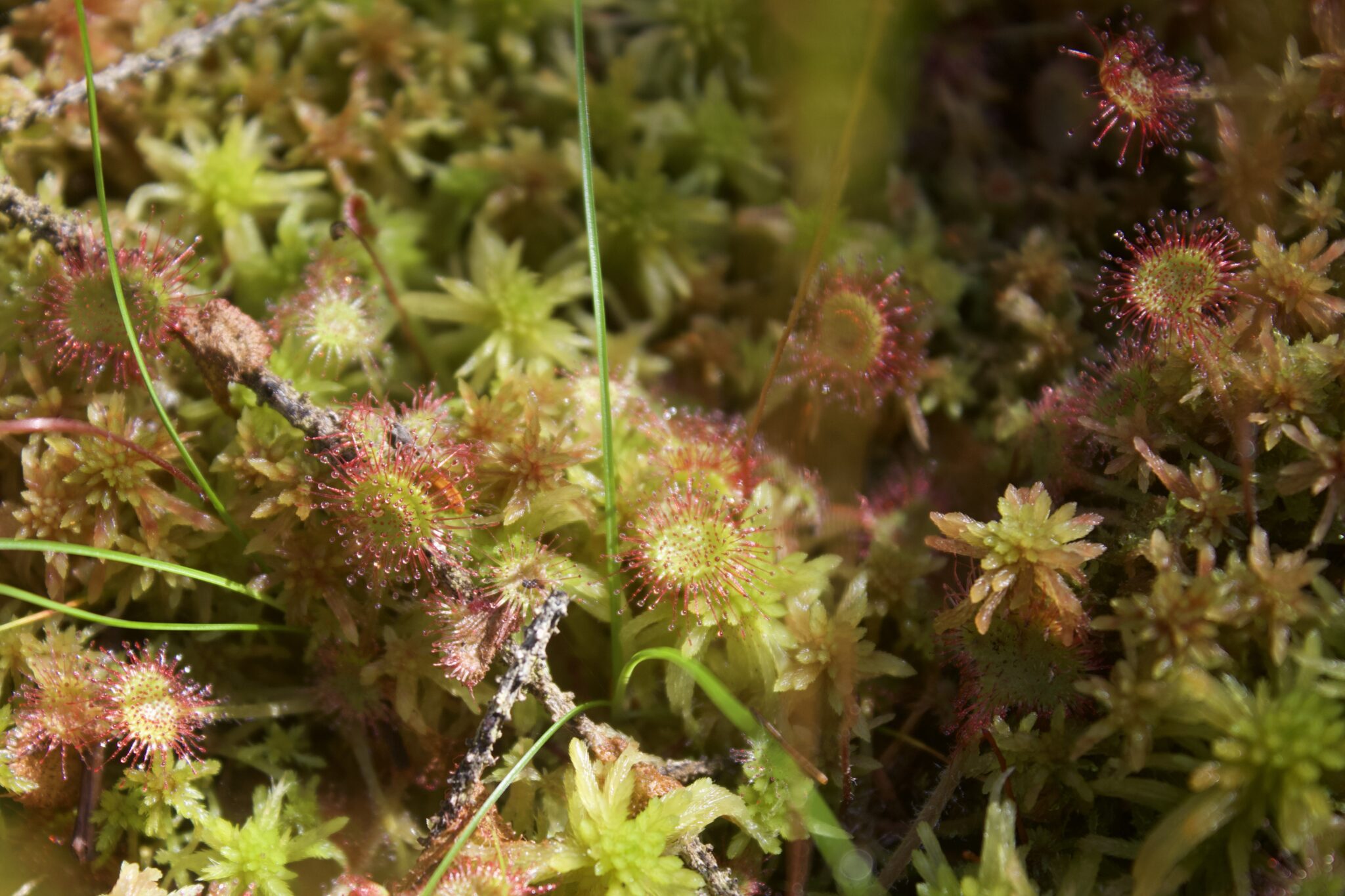
There are around 200 species worldwide in the genus Drosera. These individuals have adapted to live in nutrient-poor environments, like the bog in Schoodic Forest. They have circular leaves covered in thin red filaments that secrete a sweet, sticky nectar to capture their prey. The droplets of liquid mimic nectar, which attracts insects. When an insect lands on a leaf, it gets stuck on the glue-coated filaments and triggers rapid cell growth, causing a folding movement of the glandular hairs inward. Charles Darwin was the first scientist to document that it takes a Drosera plant an average of 15 minutes to completely enfold its prey.
The movement maximizes the amount of contact between the prey and the filaments, which then release digestive enzymes and begin to break down the insect into a nutritious meal. Once broken down, the sundew converts the proteins from its ensnared prey into nitrogen. The sundew then uses it to supplement its nutrient deficit substrate of sphagnum moss. Given the unsavory fate of insects who get too close to sundew’s leaves, the plant places its flower far out of reach of its low-lying leaves so that it doesn’t ensnare its own pollinators. Pretty genius.
I scanned the surrounding sphagnum moss and realized I was encircled by countless other individual sundew plants, as well as northern pitcher plants – another insectivorous, or bug-eating, species that grows in Maine’s wetlands. All of a sudden the puzzle pieces of a bog ecosystem began clicking into place as I saw things I had only read about. The excitement of this first bog encounter propelled me around the landscape as I took in all of the bog’s characteristics. Spruce and tamarack trees towered above me, and small shrubs dotted the landscape. Plants exhibited bright reds and oranges in addition to vibrant green hues. But what I found most distinctive was the openness of the bog, in comparison to the dense forest that surrounded it on all sides.
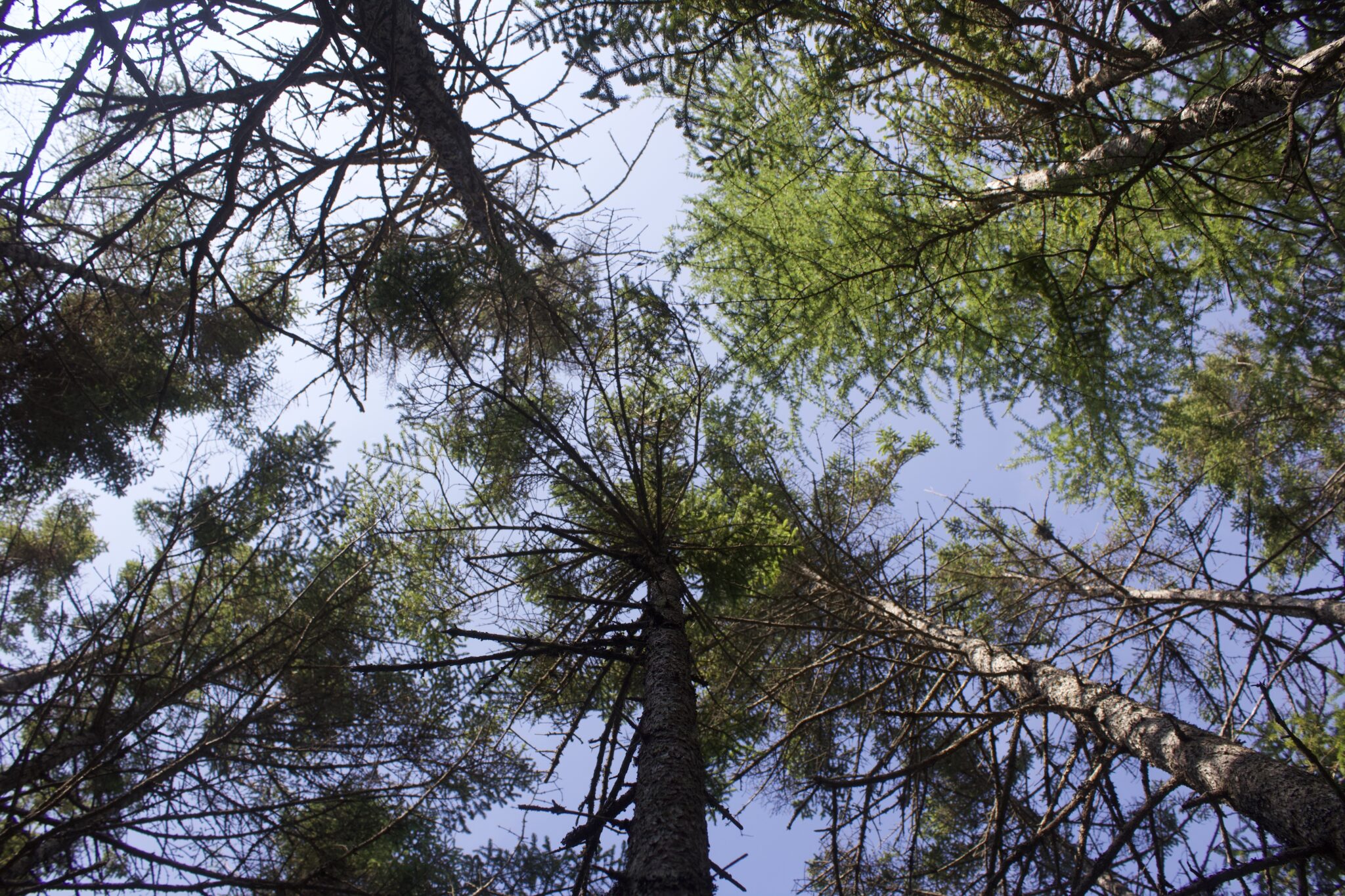
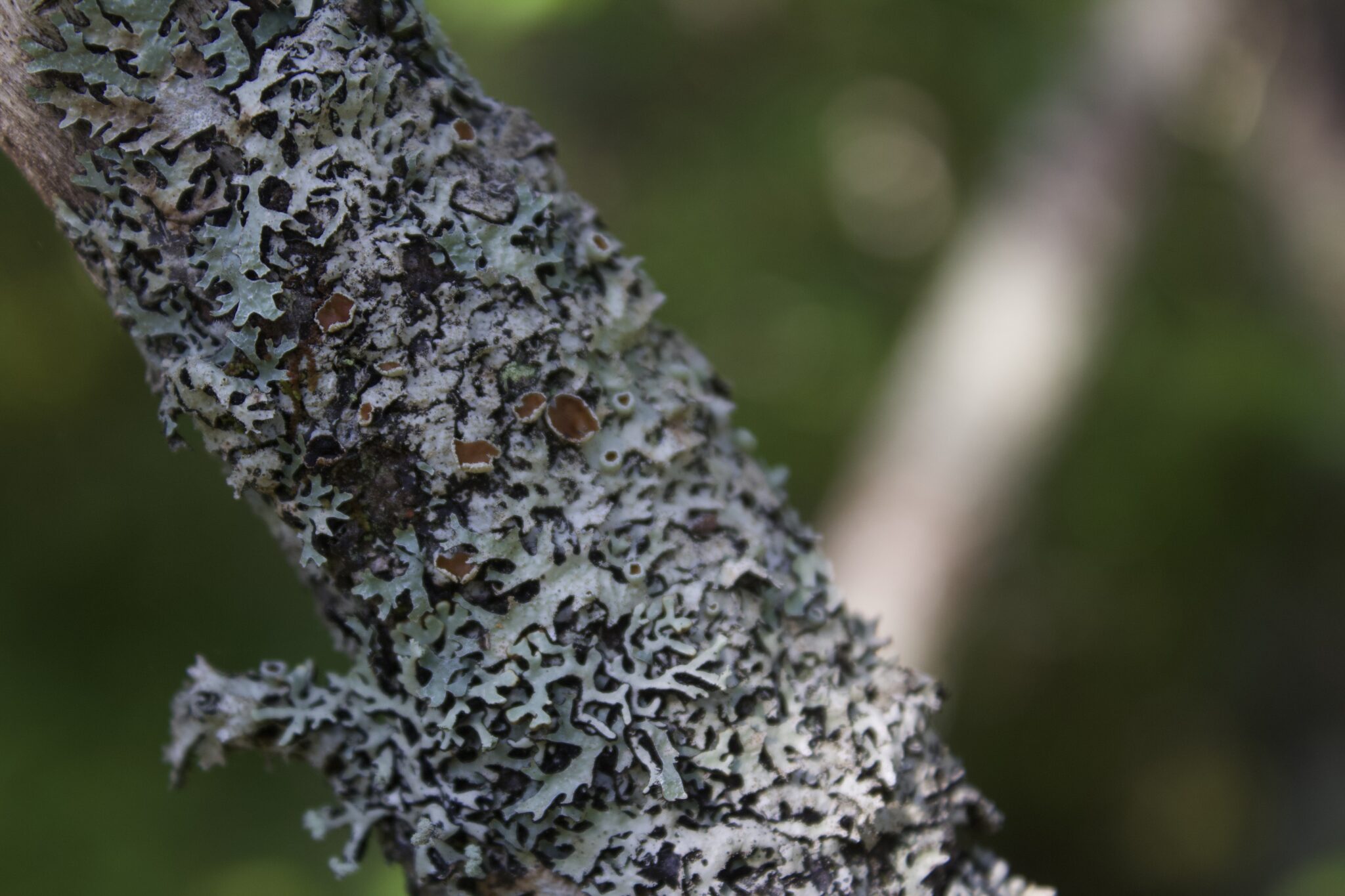
Bogs, and wetlands in general, serve as carbon sinks and they regulate groundwater by preventing flooding and absorbing runoff. In addition, they are beautiful to behold. I’m so glad I stumbled across this gorgeous bog, it inspired me to learn more about bog plants and how wetland ecosystems function. For anyone interested in visiting a bog in the region, I recommend the Orono boardwalk in Bangor City Forest, as well as the Eagle Hill Bog at Campobello Island.
